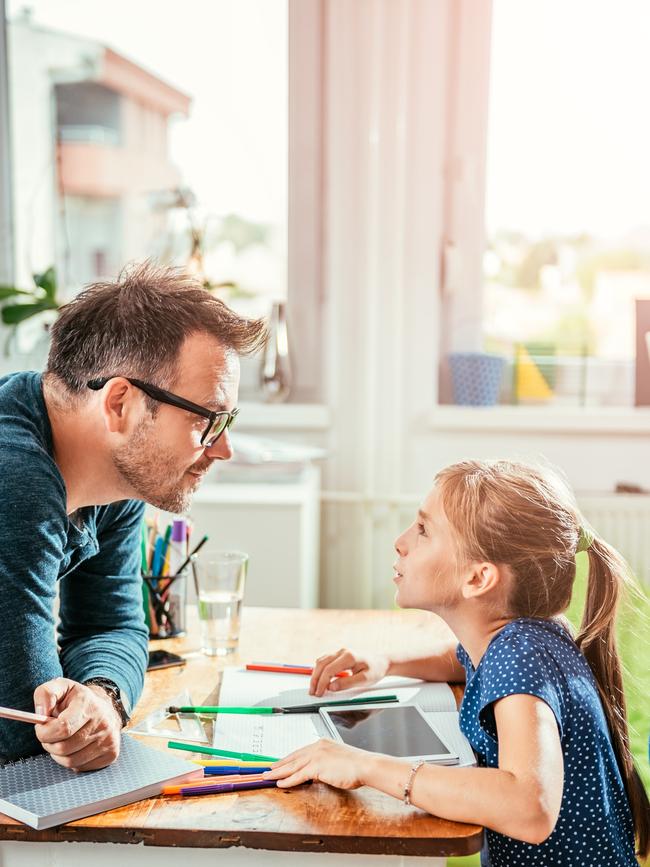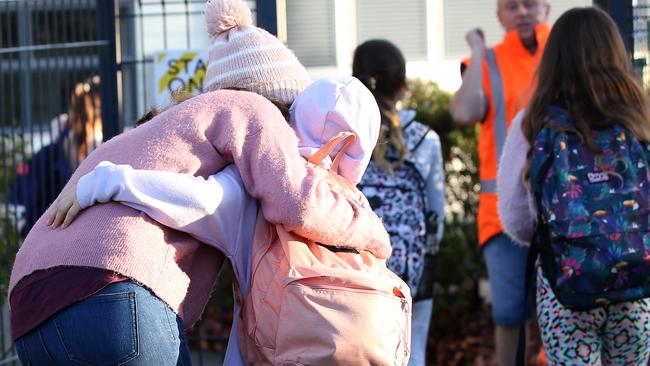COVID-19 finally puts parents and teachers on the same team
Schools may be restarting, but thanks to covid chaos, teachers and parents rallied together to keep their kids’ on track. Here are four ways to keep up that engaged learning, writes Allan Dougan.
Parents and teachers don’t always work together as well as they should.
I know because I’ve been on both sides of the desk.
As a teacher, I have watched colleagues brace themselves for confrontation before parent interviews preparing defences that would stand up in courts across the land. As a parent, I’ve been caught off-guard by a totally unexpected email, phone call or report more than a few times.
Too often, that door between school and home, which we hope is, at the very least ajar, is kept firmly closed.
But amid the chaos that came with COVID-19, teachers and parents rallied together to keep their kids’ learning on track. In a nationwide survey we conducted at 3P Learning, 77 per cent of teachers reported that parents were proactively involved in their child’s learning in May, compared with 57 per cent before March.

These statistics point to the fact that, in this time of crisis, parents have been exposed to the complexities of teaching and how their child responds to learning. This renewed understanding can help them support their child in successfully returning to the classroom. Furthermore, they are indicators of much richer real discussions about children’s learning that have been happening without the confines of a three-sentence report comment, a hurried email exchange, or an arbitrary progress interview.
I suggest we make this happen more often. Our students’ learning will be so much more powerful with all hands-on deck working towards a common goal.
To parents still reeling from their experiences with home-learning, the suggestion will be met with some trepidation. I get it. After spending the past two months struggling to deliver tech-support, pep-talks, discipline, and clumsy explanations of long-forgotten geography concepts to my own kids, the return to school couldn’t come fast enough.
Yet for all the slammed doors and head-in-hands frustration that home learning may have entailed, we got to know our kids that little bit better. We were fully involved in all the struggles and light bulb moments that occur between the mystery hours of 9am and 3pm. It’s a powerful privilege we ought to hold onto when we go back to dropping our kids off each morning.
And it doesn’t mean parents should become teachers overnight either. Our concept of learning has become so wound up in discussions of curriculum and assessment that we often forget it how simple and pure a form it can take. Try celebrating learning as a family with these four simple strategies:

1. Discuss learning at the dinner table
Ask your kids what they learned at school during the day, and don’t settle for a one-word answer. Go deeper and encourage them to discuss what they found interesting, what they found challenging, and what they are proud of. Engage with them and bring your own knowledge to the table but listen above all else. You’ll make learning a regular and natural part of family conversation, and your kids will take this same attitude into the classroom.
2. Include kids in household chores
Getting your kids involved in household chores gives them an opportunity to learn, while you get an extra set of hands to take care of the busywork. Use cooking as an opportunity for kids to practise measurement skills, have them set the table and count the correct number of knives and forks needed, or get them to clean up by grouping items by size, shape or another category. Resist the urge to intervene and let them make mistakes where safe – it’s how they learn best.

3. Engage with the work your kids bring home
Take the time to read and look over the work your kids have been doing at school. The goal is not to critique their efforts or give them tips, but to show genuine interest in what they are producing. Ask them open-ended questions about it (“I like this, what made you do it?”, “This part is interesting but I’m not sure I understand, talk me through it”) to prompt deeper discussion. They’ll know you’re invested in their learning and that their efforts count.
4. Motivate and incentivise learning at home
While teachers do their best to engage students at school, your motivating influence is the secret to keeping them learning at home. Create a rewards chart where you give a sticker or gold star for every day that involves a home learning activity. This isn’t limited to homework – your child might use a learning app for a set time each day, read a book or practise a skill. Any form of proactive learning should be encouraged.
And remember – in the spirit of the parent-teacher partnership – if you’re ever unsure of what your child should be doing at home, just ask. Teachers are more than happy to help. After all, we both want the best for them.
Allan Dougan is the Global Head of Education at 3P Learning, creators of Mathletics, Readiwriter and Reading Eggs.
